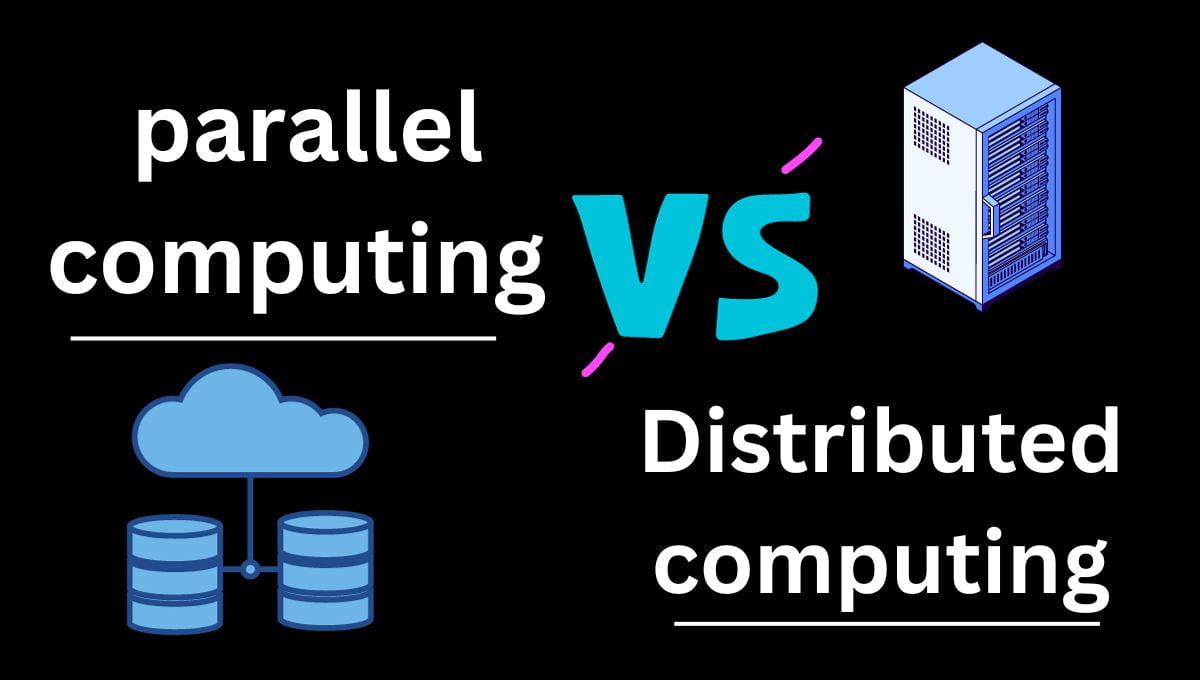CLOUD COMPUTING
What is Google App Engine in Cloud Computing?

Cloud computing has emerged as a transformative force, reshaping the landscape of IT infrastructure and application development. Amidst the multitude of cloud platforms available, one name stands out: Google App Engine. In this comprehensive guide, we will delve deep into the realm of cloud computing to answer the pivotal question: What is Google App Engine in cloud computing? This article will take you on a journey through the intricacies, advantages, and possibilities this groundbreaking technology offers.
Introduction
Where businesses and individuals alike rely on cloud-based services, Google App Engine has emerged as a formidable player in the field of cloud computing. This article aims to demystify Google App Engine, shedding light on its significance and the myriad possibilities it offers developers.
Understanding Cloud Computing
Before diving into the intricacies of Google App Engine, it’s crucial to grasp the concept of cloud computing. At its core, cloud computing involves the delivery of various services over the internet, encompassing storage, computing power, databases, and more. It eliminates the need for local servers and physical infrastructure, allowing users to access resources on demand.
What is the Google App Engine?
Google provides a cloud computing solution called the Google App Engine. It gives users access to Google’s robust and organized infrastructure for the creation, hosting, and growth of their apps. Programming languages supported by Google App Engine include Python, Java, Go, PHP, and numerous more, giving developers the option to choose the language of their choice.
One of Google App Engine’s most notable features is its fully managed environment. This implies that it handles all of the technical background work, freeing developers to focus solely on the application they are developing. Because of its many advantages, like auto-scaling and uninterrupted deployment, it is highly recommended for companies looking to improve their cloud operations.
During sales, Google App Engine has completely changed how e-commerce businesses handle their resources. Manual resource allocation used to be expensive and time-consuming. Automatic scaling is made possible by the Google App Engine, which enables smart handling of traffic spikes and maintains service continuity. It reduces as traffic lessens, maximizing expenses and guaranteeing smooth operation all along.
The Birth of Google App Engine
Google App Engine, often referred to as GAE, was introduced by Google in 2008 as a fully managed platform-as-a-service (PaaS) for developing and hosting web applications. With GAE, developers could focus on writing code while leaving infrastructure management to Google, streamlining the development process.
How does cloud computing work in the Google app engine?
Google App Engine is a Platform as a Service (PaaS) that provides a fully managed environment for hosting web applications. This means that Google takes care of all the infrastructure requirements, such as provisioning servers, managing operating systems, and deploying applications.
When you develop an application for Google App Engine, you simply write your code and deploy it to App Engine. App Engine will then take care of running your application and scaling it up or down as needed. This frees you up to focus on developing your application without having to worry about the underlying infrastructure.
The architecture of Google App Engine
Google App Engine’s architecture can be understood at three main levels:
1. High-Level View:
- PaaS Platform: GAE operates as a Platform as a Service (PaaS). This means it handles the underlying infrastructure, including servers, networking, and security, allowing you to focus on your application code.
- Managed Services: Google manages various services like databases, storage, authentication, and more, which you can integrate into your app seamlessly.
- Scalability: The platform automatically scales your application based on traffic, ensuring smooth performance even with spikes.
- Serverless: In the serverless environment, you deploy and run code without managing servers, simplifying development.
2. Application Level:
- Services: Your application consists of one or more services, each representing a logical unit of functionality (e.g., a web app or an API).
- Versions: Each service can have multiple versions, allowing you to deploy updates without downtime.
- Instances: Each version runs on one or more instances, which are managed containers allocated by Google.
- Runtime Environment: Depending on your choice (standard or flexible), your application runs in a pre-configured environment or custom container with your chosen language and libraries.
3. Underlying Infrastructure:
- Global Network: Google’s highly distributed global network ensures low latency and high availability for your application.
- Data Centers: Your application runs on Google’s managed data centers with robust security and reliability.
- Managed Services: The various Google Cloud services like Cloud SQL, Cloud Storage, and Cloud Functions integrate seamlessly with your application.
Here are some additional points to consider:
- Deployment: You can deploy your application code using the GAE SDK or various CI/CD tools.
- Security: Google handles basic security like firewalls and intrusion detection, but you need to implement application-level security measures.
- Monitoring: GAE provides tools for monitoring your application’s performance and resource usage.
Core features of Google App Engine in Cloud Computing
GAE has many features that make it extremely popular with developers worldwide. Some of these features are as follows:
What are the benefits and challenges of using the Google App Engine?
- Fast Development and Deployment: GAE simplifies development with pre-configured environments, built-in services, and automatic scaling. This allows you to focus on writing code and get your application up and running quickly.
- Reduced Costs: The pay-per-use model ensures you only pay for the resources your application uses. This makes it cost-effective for small projects and applications with fluctuating traffic.
- High Availability and Scalability: Google’s robust infrastructure guarantees your application is always accessible and automatically scales to handle traffic spikes, preventing downtime and performance issues.
- Security: GAE offers built-in security features like firewalls, intrusion detection, and sandboxing, providing a secure environment for your application.
- Managed Services: You can leverage various Google Cloud services, like databases, storage, and authentication, directly within your application, simplifying development and eliminating the need to manage separate infrastructure.
- Developer-Friendly: GAE offers extensive documentation, tutorials, and community support, making it easy for developers of all levels to get started and build on the platform.
Challenges of the Google App Engine:
- Limited Customization: Compared to traditional hosting options, GAE offers less control over the underlying infrastructure, potentially limiting fine-tuning for specific needs.
- Vendor Lock-in: While migration tools exist, deploying on GAE creates some level of vendor lock-in, making it more difficult to switch to other providers in the future.
- Limited Language Support: The Standard environment has specific language limitations, while the Flexible environment requires managing container configurations.
- Not Ideal for Resource-Intensive Applications: GAE might not be the best choice for applications with very specific or highly demanding resource requirements.
- Potential Cost Creep: Pay-per-use can be beneficial, but for applications with unpredictable usage patterns, costs could unexpectedly increase.
Why choose the Google App Engine?
Choosing Google App Engine (GAE) for your web application development comes with a set of pros and cons. Here’s a breakdown of why someone might choose GAE, focusing on the key advantages:
Focus on code, not infrastructure:
- Managed platform: GAE handles server provisioning, scaling, and maintenance, freeing you to focus on building your application logic.
- Fast development and deployment: A streamlined environment allows for rapid development cycles and easy deployment.
- Built-in services: Access Google Cloud services like databases, storage, and authentication directly, simplifying development.
Scalability and reliability:
- Automatic scaling handles traffic spikes seamlessly, ensuring smooth performance under load.
- High availability: Google’s global infrastructure ensures your application is always accessible.
- Pay-per-use: cost-effective, as you only pay for the resources your application uses.
Additional benefits:
- Security: It inherits security features from Google’s infrastructure, including firewalls and intrusion detection.
- Developer-friendly: Extensive documentation, tutorials, and community support make it easy to learn and use.
- Integration with other Google Cloud services: leverage various tools and services within the Google Cloud ecosystem.
However, consider these limitations before choosing GAE:
- Limited customization: less control over the underlying infrastructure compared to traditional options.
- Vendor lock-in: Migrating to other providers can be more complex.
- Language limitations: standard environments have restrictions, while flexible environments require container management.
- Not ideal for resource-intensive applications: May not be suitable for highly demanding tasks.
- Potential cost creep: Pay-per-use can lead to unexpected costs for unpredictable usage patterns.
Ultimately, choosing GAE depends on your specific needs and priorities.
- Rapid development and ease of use are top priorities.
- Scalability and reliability are crucial for your application.
- Cost-effectiveness is a major concern.
- You are comfortable with the Google Cloud ecosystem and its limitations.
Conclusion
Google App Engine is a game-changer in the world of cloud computing. Its user-friendly approach, scalability, and integrated services make it a compelling choice for developers and businesses alike. By harnessing the power of GAE, you can build and deploy applications with ease, knowing that Google has your back.
FAQs
Q1: Is the Google App Engine suitable for small businesses?
(A) Yes, Google App Engine is suitable for small businesses due to its cost-efficiency and scalability, allowing businesses to start small and grow as needed.
Q2: Can I use the Google App Engine for mobile app development?
(A) While Google App Engine is primarily designed for web applications, it can be used in conjunction with other Google Cloud services for mobile app development.
Q3: Is there a free tier for Google App Engine?
(A) Yes, Google offers a free tier with limitations, allowing developers to experiment and host small-scale applications at no cost.
Q4: What programming languages are supported by the Google App Engine?
(A) Google App Engine supports a variety of programming languages, including Python, Java, Go, PHP, Node.js, and more.
Q5: How does Google App Engine handle security?
(A) The Google App Engine incorporates robust security measures, including encryption, identity and access management, and secure deployment options, to ensure the safety of applications and data.

 FUNDAMENTAL1 year ago
FUNDAMENTAL1 year agoHow Cloud Computing Improving Customer Service Processes

 FUNDAMENTAL4 months ago
FUNDAMENTAL4 months agoWhat is cloud computing? A Comprehensive Guide

 CLOUD COMPUTING3 weeks ago
CLOUD COMPUTING3 weeks agoWhat Is Vlan and VSAN In Cloud Computing?

 FUNDAMENTAL2 weeks ago
FUNDAMENTAL2 weeks agoHow can Cloud Technology Help Small Businesses ?

 FUNDAMENTAL4 months ago
FUNDAMENTAL4 months agoEvolution of Cloud Computing : A Well-Explained

 CLOUD COMPUTING3 weeks ago
CLOUD COMPUTING3 weeks agocloud bursting in cloud computing

 FUNDAMENTAL3 weeks ago
FUNDAMENTAL3 weeks agoIaaS PaaS and SaaS in cloud computing

 CLOUD COMPUTING3 weeks ago
CLOUD COMPUTING3 weeks agoDistributed computing in cloud computing?
















